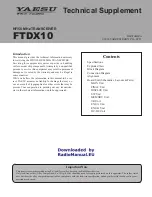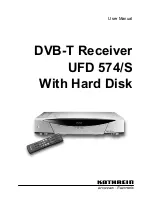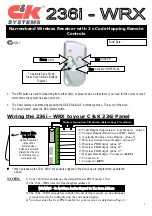
- 12 -
OPERATION PROCEDURE
Frequency Selection
Frequency selection for the
DX 2527
is simple. Select the desired
operating frequency by rotating the Frequency selector or using the
UP/DOWN
buttons on the top of the microphone. Press the
LOCK
button to lock the selected frequency. This will disable the
frequency selector and the
UP/DOWN
buttons on the top of the
microphone. Repressing the
LOCK
button unlocks the frequency.
Use the
SHF
button to set the step frequency in 100Hz, 1KHz,
10KHz, 100KHz or 1MHz increments. The frequency step is
indicated by a small triangle directly under the corresponding digit
on the frequency display.
Mode Selection
To select an operating mode on your
DX 2527
, simply rotate the
MODE
selector, and place it in the desired operating mode
position. The
PTT
switch on the microphone controls the transmit
and receive of your radio.
RF Power Control
This control adjusts the power output continuously from 1 to 25
watts, on SSB and from 0.25 to 10 watts on AM.
PROGRAMMING
Frequency Selection
Frequency selection in the radio can be accomplished using any
three of the following methods:
1. The first method of frequency selection I through the use of the
SHF
key and
the
UP
and
DOWN
arrows.
To accomplish this,
press the
SHF
button until the cursor arrow is position under
the digit of the frequency that is to be changed. Then use the
UP
arrow
to increase the number. If a decrease in frequency is
desired, press the
DOWN
arrow. Perform the steps described
above for each digit of the frequency until the desired frequency
is displayed in the
LCD
display windows.
- 13 -
2. The second method of frequency selection
is accomplished
using the
SHF
button and the channel select knob located on
the front panel. Use the
SHF
button in the manner described
above to select the digit to be changed. Then proceed to rotate
the channel selector knob clockwise to increase the frequency.
Rotate the channel select knob counterclockwise to decrease
the frequency.
3. The third method of selecting he operating frequency of the
radio is through the use of the
SHF
button and the channel
UP
and
DOWN
buttons located on the microphone. Frequency
selection by this method is accomplished in the same manner
as with the
UP
and
DOWN
arrows on the keypad. The only
difference is that the channels UP and DOWN buttons on the
microphone are used.
Once a signal has been detected on a particular frequency, It may
be necessary to slightly change the frequency to provide the best
audio through the speaker. This can be accomplished by rotating
the clarifier control to vary the frequency by ±0.5 KHz. After this
fine-tuning has been accomplished, press the LOCK button to
lock in the frequency at the point of best reception.
Receive Scanning
The receive scanning feature allows you to locate active
frequencies in the entire band segment. To begin scanning,
slowly turn the squelch control clockwise until the receiver noise
disappears. Next, press the
SCAN
button. The unit should start
scanning from the lower to the higher frequency. Pressing the
SCAN
button again will change the direction of scanning. When
the
SCAN
button is pressed
"SCAN+"
or
"SCAN-"
will be
displayed on the LCD display. The scan will stop on any active
frequency for the duration of the transmission. When the
transmission stops, the
DX 2527
will wait approximately 2
seconds before it resumes scanning. If you want to deactivate
Scan mode while it's scanning, press the
MAN
(manual) button




























